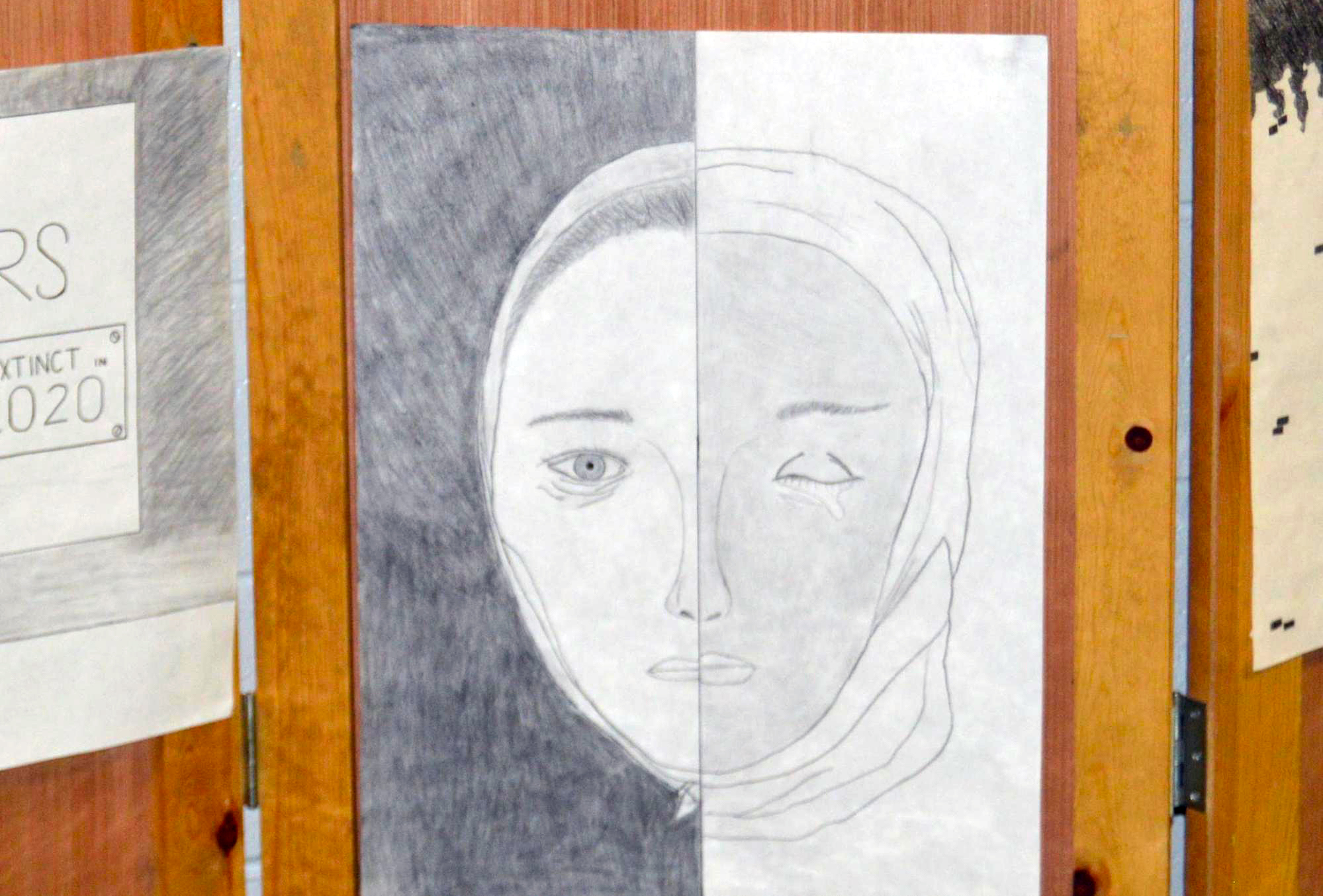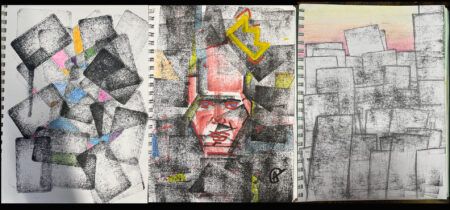Teaching with Contemporary Art
Radical Art in a Conservative School

Empathy project by students Caryn Trammel and Emma Kruse.
Radical art uses provocative imagery to convey a variety of confrontational and controversial ideas. Radical art should make viewers question assumptions and think in new ways; such thoughts often go against conservative ideologies. Teaching in a conservative school can be challenging and frustrating. In a magnet school in a Southern small town, student diversity is limited, and teachers often face close-minded parents and administrators. In the classroom, I want to teach deliberately and passionately, but I must be cautious most of the time.
A few years ago, the community where I live fought the building of a Muslim mosque, even though there are countless other large worship centers for other religions. The expressed hatred and bigotry made me contemplate moving to a more accepting town and state. I voiced my concern to the artist Oliver Herring, who said it was the reason I should stay. He explained that my view was needed in the community and school. When the mosque was built after all, following intolerant rhetoric, threats, and rallies, I felt somewhat relieved.
Even though the school where I teach is one of the more progressive ones in the system, I must constantly mind my words. I cannot express negative thoughts about the country and current Presidential administration, as this would upset some parents. In my classroom, students wear Trump t-shirts and affix Confederate flags on backpacks; these symbols upset me, a White man. I can only imagine how these items dishearten and threaten minority students. I struggle with how I can deal with this situation and turn it into something positive in the classroom.
Contemporary Art Opens the Door
Regardless of the attitude of the school, I never shy from showing my students contemporary art. After viewing images of art works and Art21 videos, about such artists as Carrie Mae Weems, my students participate in and initiate amazing conversations. Weems’s work opens a way to talk about subjects like racism, appropriation, women’s rights, history, and identity. I see that these conversations give students an opportunity to think about and question perceptions of social and political issues. Students can grow through hearing different points of view and can develop new perspectives for themselves.

Student project on empathy.
Students Act and React
I want my students not only to think but also to respond. Flossie Chua, an Art21 Educator mentor, said that true learning happens in a student’s response. Also, when students look within themselves, they can begin to make art about what matters in their lives. When students make art in response to an issue, the process can lead them to be activists—an important commission for citizens, today.
Empathy is the Key
Right after the 2016 Presidential election, I felt hopeless and without a voice. I was so upset, and I felt I could not ignore the issue. I stopped the work in progress in my foundations class and quickly planned and began a unit on empathy, with Art21 as my resource. My students and I spent some time discussing the term empathy, and we looked at how Alfredo Jaar makes art that forces the viewer to think about a topic. Jaar sees his art as a voice to speak to difficult situations, such as ethnic cleansing in Rwanda. He models empathy as an artist—a great lesson for every person.
I encouraged my students to create drawings that speak to a political or social issue through the lens of empathy. The students worked in pairs, so they could share the experience and learn from each other. Students tackled subjects such as immigration and racism. When students expressed views opposite those of the new administration, I felt I could not have presented a more important lesson.
Early this semester, I received an email from a former student, who graduated in the spring. He had been hanging with the crowd of boys wearing the Trump t-shirts. I never really knew what he thought of my class, but his email thanked me for being a good teacher. I was surprised and honored. He had listened during class and was open to what I had been teaching. I replied to him that his message made my day, but it really made my year.



